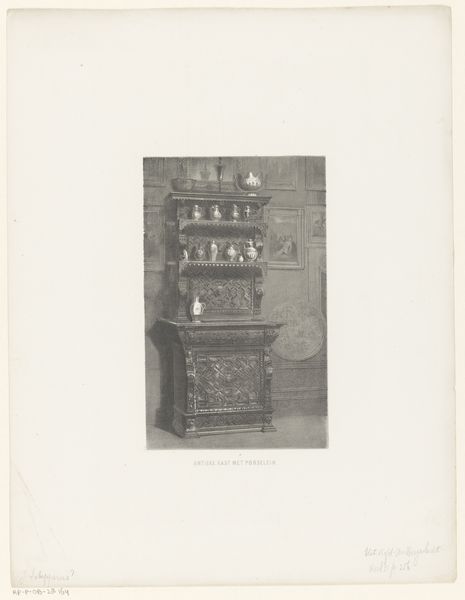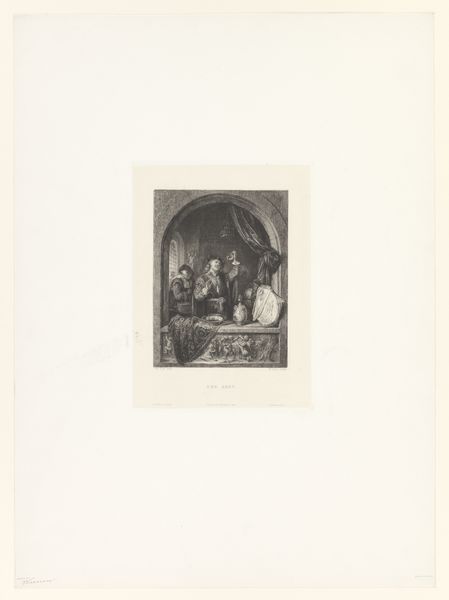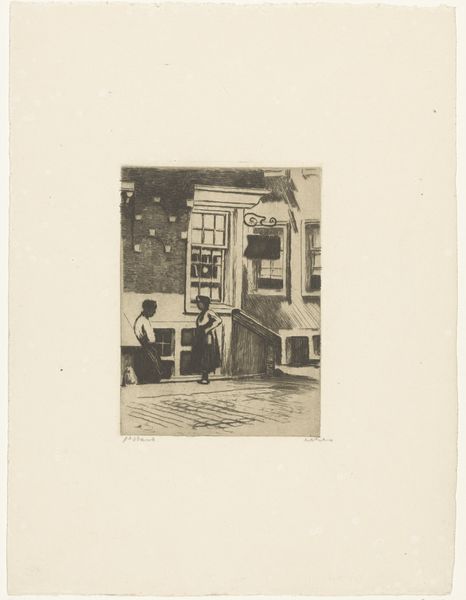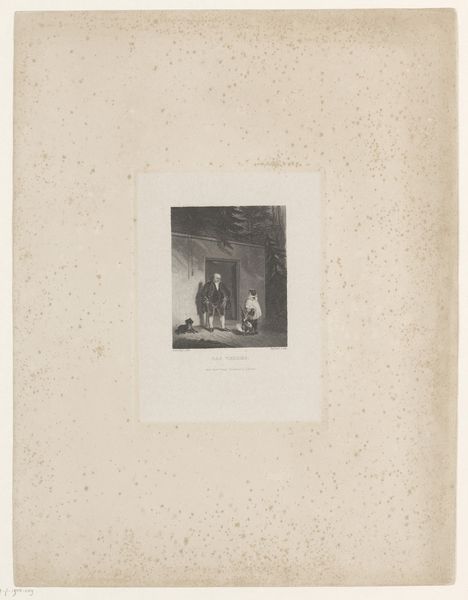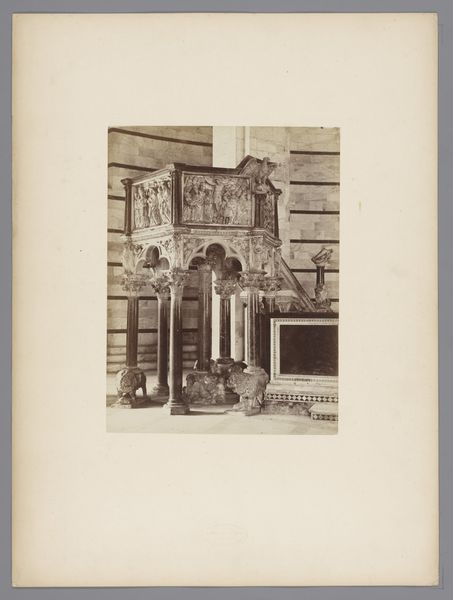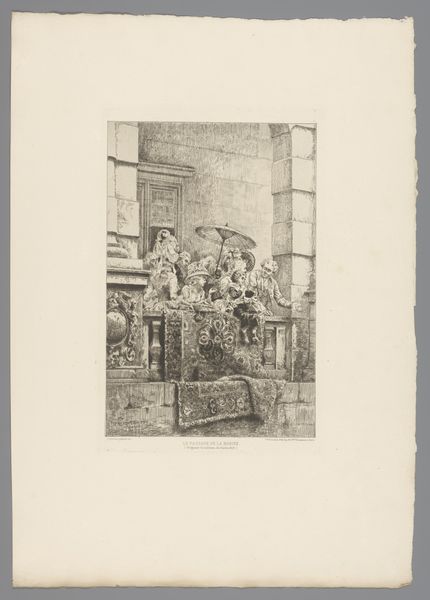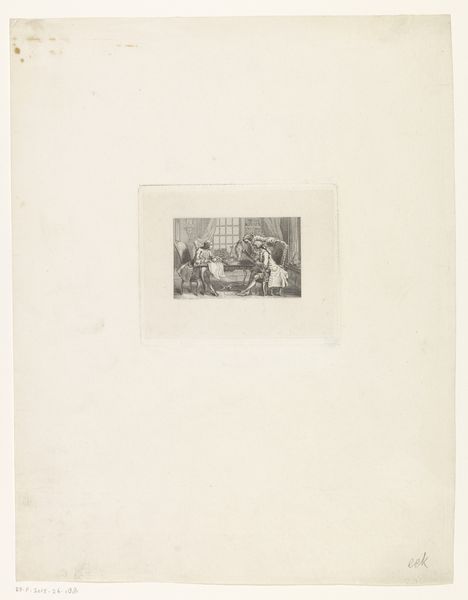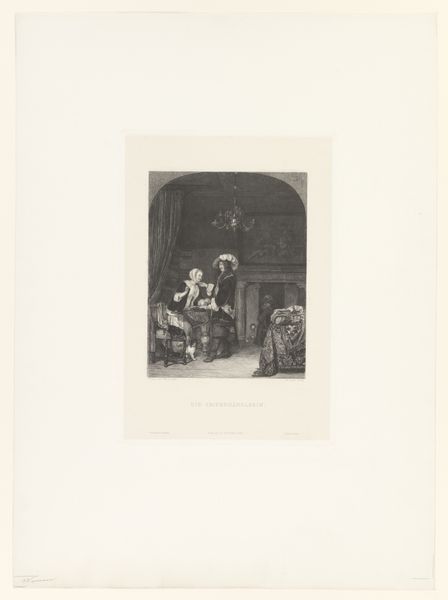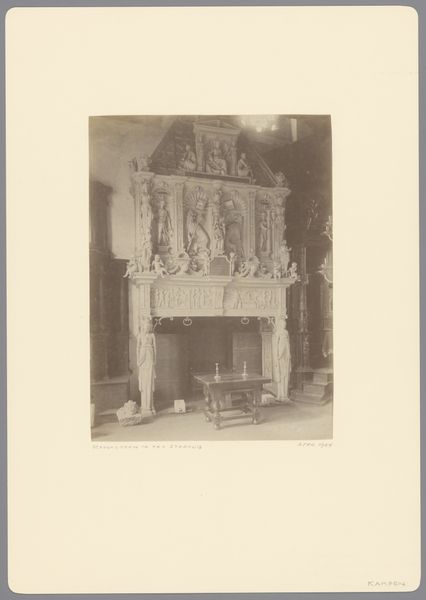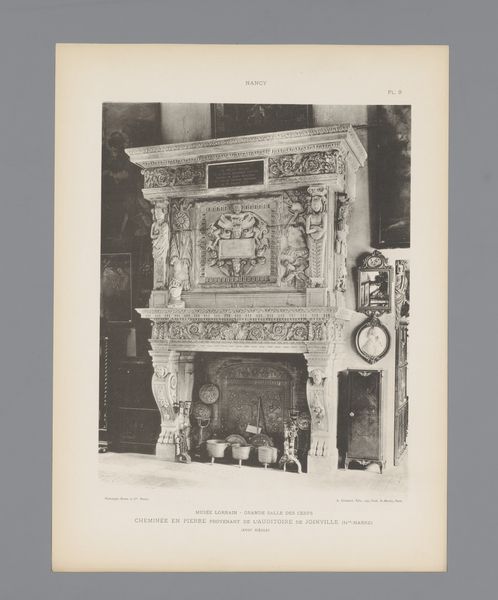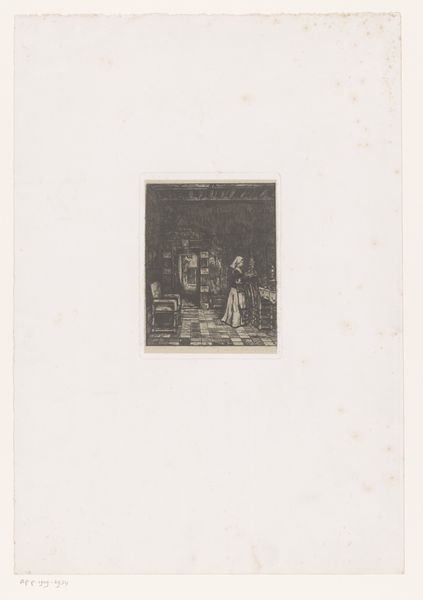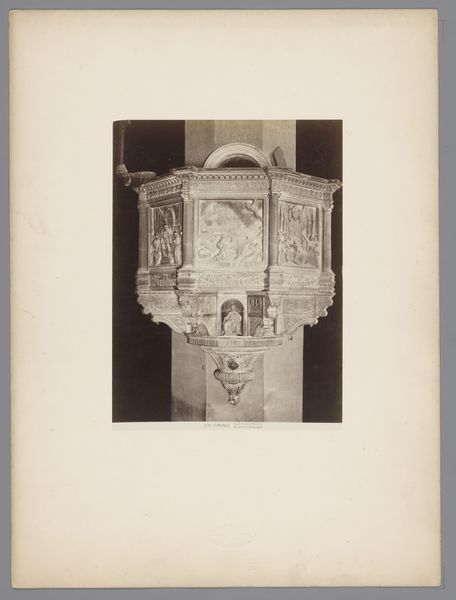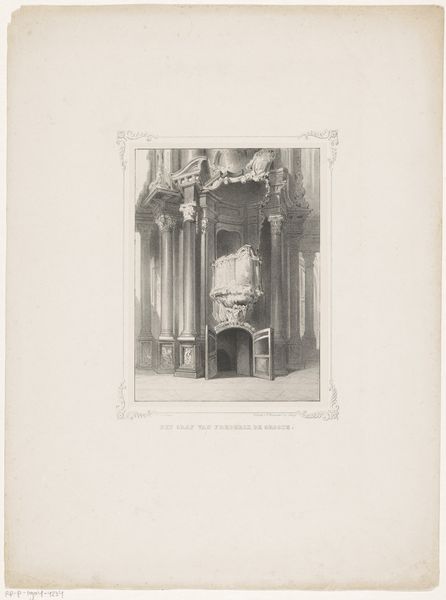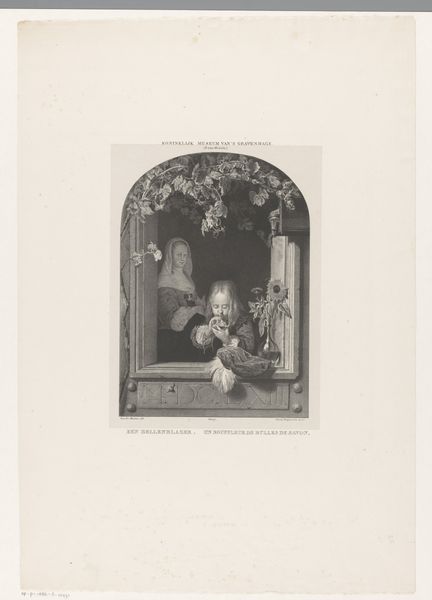
print, metal, engraving
# print
#
metal
#
vase
#
engraving
Dimensions: height 390 mm, width 300 mm
Copyright: Rijks Museum: Open Domain
Curator: Here we have "Kast met vazen," created anonymously between 1857 and 1864. This piece, residing here at the Rijksmuseum, employs engraving on metal to depict, as the title suggests, a cabinet adorned with vases. Editor: My immediate reaction is one of slightly unsettling domesticity. There’s something austere and almost voyeuristic about viewing this private space. It feels quiet, but pregnant with unspoken narratives. Curator: It certainly invites questions about the culture of collecting and display in the mid-19th century. What does it say about status and taste? The cabinet itself becomes a stage for exhibiting wealth and refinement, particularly among the emerging middle class. Editor: Exactly. Vases, traditionally symbols of abundance, fertility, even immortality, are elevated—literally. But the almost clinical arrangement strips them of their inherent symbolism, turning them into mere trophies. It feels less about celebrating beauty and more about proclaiming ownership. Curator: Or perhaps it speaks to the museological impulse of the time? Displaying and categorizing objects wasn't just a sign of wealth but also a means of understanding and controlling the world. By showcasing these artifacts in a stylized interior, it frames domestic life as a theater of collecting, in turn influenced by, and influencing the shaping of national collections like the Rijksmuseum. Editor: The almost monochrome palette also adds to the sense of detachment, a studied coolness. It reminds me of early photographs, where the limitations of the medium shaped perceptions of reality. The twist of the pilasters looks strangely menacing too! Curator: Indeed. The constraints of engraving push the visual emphasis onto structure and organization, echoing societal preoccupation with control. The piece becomes less a snapshot and more a construction of ideal home space in a moment of rapidly expanding production. Editor: So, we’re left contemplating how a seemingly simple scene becomes a rich archive of cultural values. Curator: Precisely, a material window into 19th-century bourgeois desires.
Comments
No comments
Be the first to comment and join the conversation on the ultimate creative platform.
